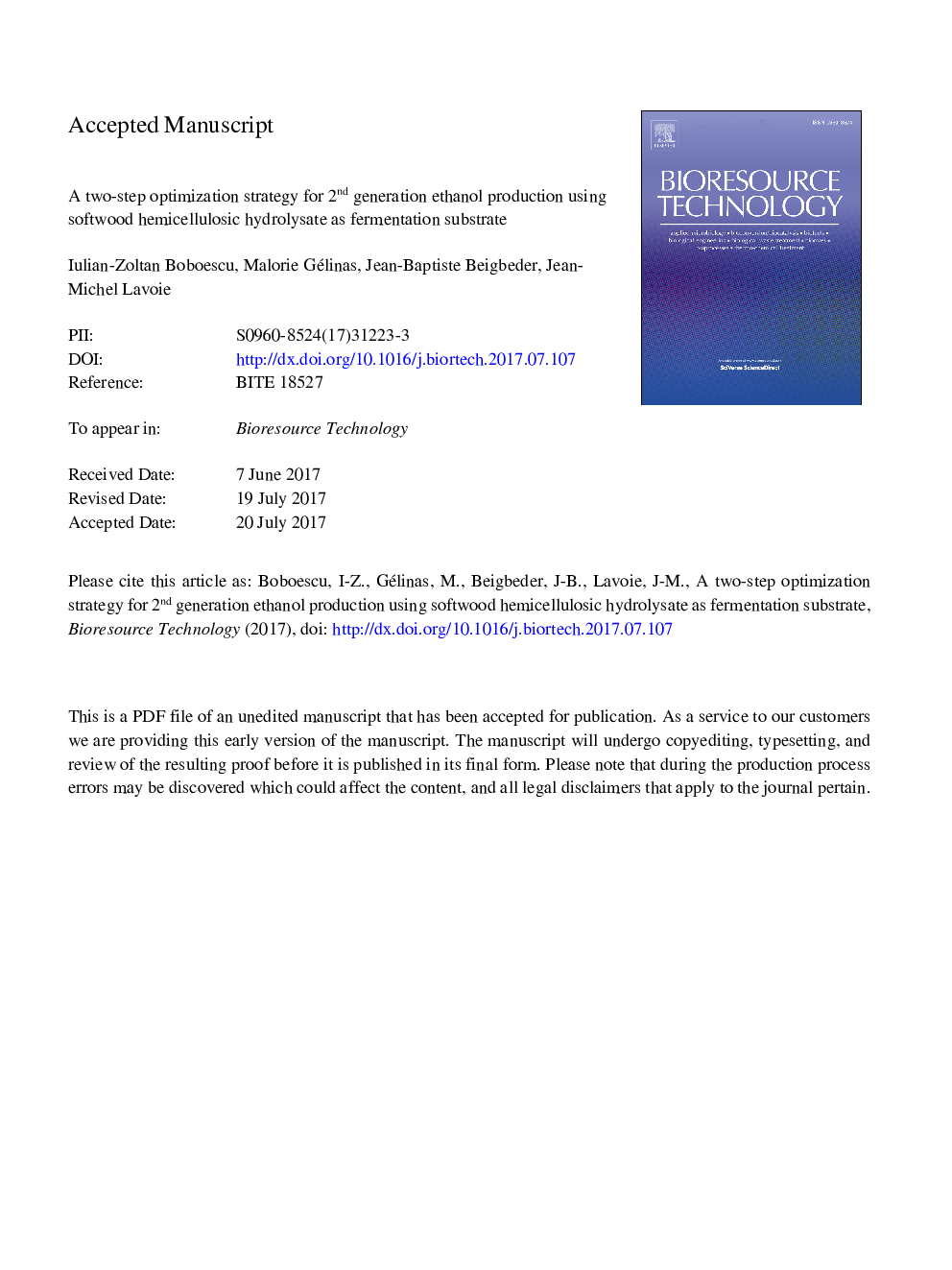| Article ID | Journal | Published Year | Pages | File Type |
|---|---|---|---|---|
| 4996586 | Bioresource Technology | 2017 | 39 Pages |
Abstract
Ethanol production using waste biomass represents a very attractive approach. However, there are considerable challenges preventing a wide distribution of these novel technologies. Thus, a fractional-factorial screening of process variables and Saccharomyces cerevisiae yeast inoculum conditions was performed using a synthetic fermentation media. Subsequently, a response-surface methodology was developed for maximizing ethanol yields using a hemicellulosic solution generated through the chemical hydrolysis of steam treatment broth obtained from residual softwood biomass. In addition, nutrient supplementation using starch-based ethanol production by-products was investigated. An ethanol yield of 74.27% of the theoretical maximum was observed for an initial concentration of 65.17Â g/L total monomeric sugars. The two-step experimental strategy used in this work represents the first successful attempt to developed and use a model to make predictions regarding the optimal ethanol production using both softwood feedstock residues as well as 1st generation ethanol production by-products.
Keywords
Related Topics
Physical Sciences and Engineering
Chemical Engineering
Process Chemistry and Technology
Authors
Iulian-Zoltan Boboescu, Malorie Gélinas, Jean-Baptiste Beigbeder, Jean-Michel Lavoie,
